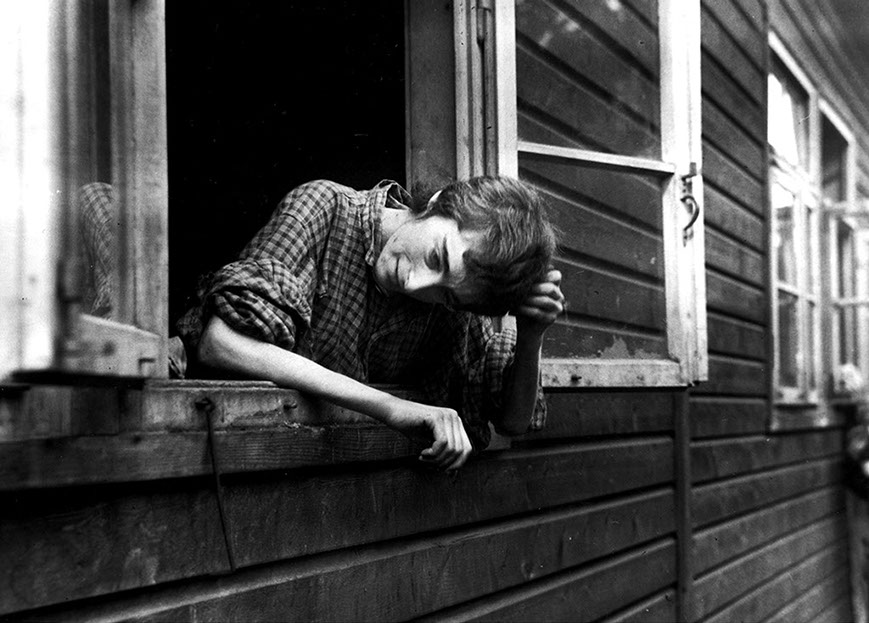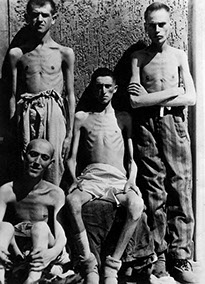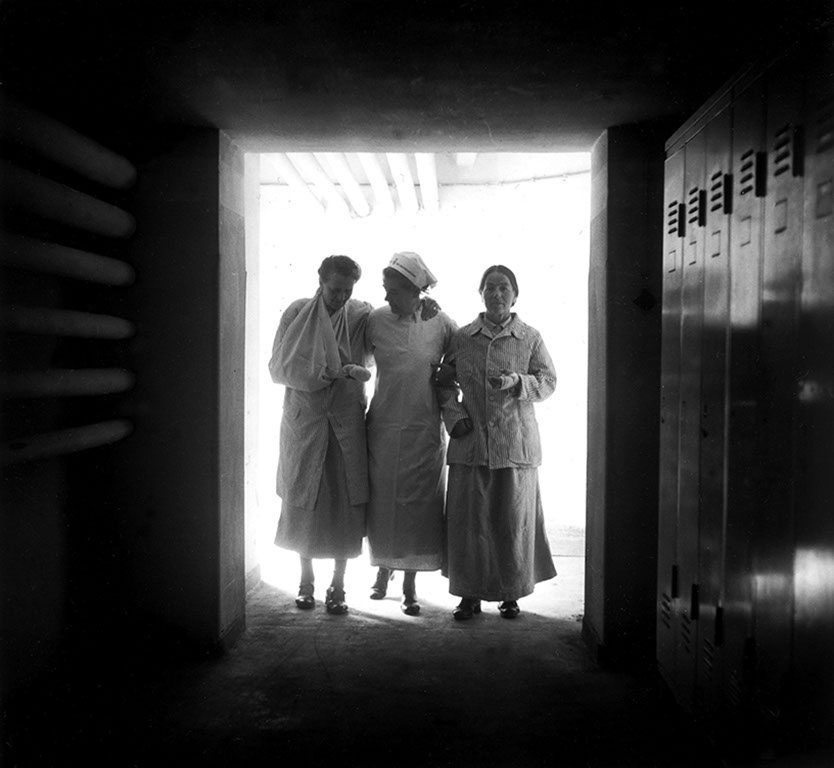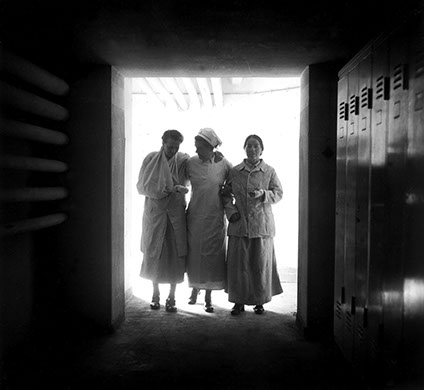

The End of the War
The end of the war meant many different things for many people. For the population of Berlin, which had suffered since 1943 under the bombing campaign against the city, the end of the war may have simply meant the cessation of military operations and bombardments. Even if the major hospitals had been moved to surrounding rural regions when the “threat from the air” began – for example, Eberswalde became the location of a capital city hospital – there was still medical infrastructure for those who remained in the city. The large bunker in Friedrichshain, shown in this photo by Hedda Walther, contained an entire hospital’s worth of medical equipment, where diagnostic examinations were done, X-rays taken, operations performed, patients nursed, and babies were born.
The other two images are from the same context, yet only insofar as they reference the end of the Second World War. For the people depicted here, the end of combat operations meant the end of National Socialist rule and their liberation.
Both photographs were taken in April 1945. One shows a group of concentration camp prisoners after American troops have liberated them from Buchenwald; the other depicts a young woman, starved into emaciation, looking out of the window of the infirmary after the liberation of the Bergen-Belsen concentration camp.
There were many displaced persons among the numerous homeless people who moved through the German countries as refugees after the end of the Second World War. In the case of Germany, these were almost exclusively people who had been deported during the National Socialist period for forced labor and/or internment in a concentration camp. According to estimates by the Allies, over 11 million people suffered this fate. The largest international aid organisations provided food and medical care in the camps, but the consequences of traumatisation were visible, if at all, only years later. An early example of a 1954 conference dedicated to “health damages from persecution and imprisonment, and their late consequences,” was co-organised by the émigré radiologist Dr. Max Michel, who also edited the publication of the conference proceedings.
Group of male prisoners after liberation
(bpk 30014980)
Liberated – young woman, infirmary, Bergen-Belsen concentration camp (bpk 30013298)
Medical care in the large bunker in Friedrichshain (bpk/Hedda Walther)
Menu
Deutsche Röntgengesellschaft e.V. © 2018
| Impressum | Datenschutz



